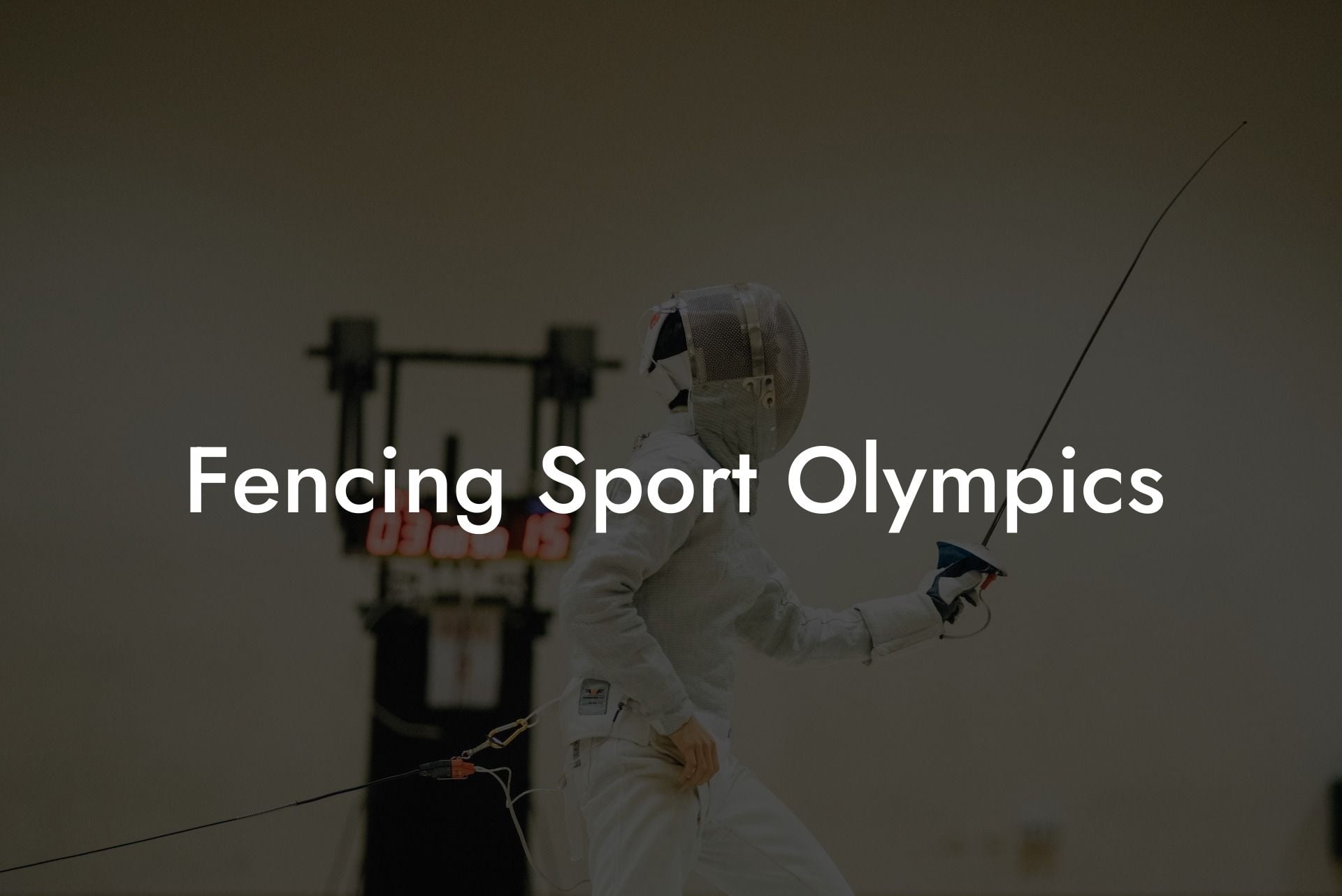Welcome to the world of fencing, an exciting and dynamic sport with a rich history that dates back to ancient civilizations. Fencing has taken center stage at the Olympics since the modern games began in 1896, and it holds a special place in the hearts of athletes and spectators alike. In this article, we will explore the fascinating world of fencing at the Olympics, delving into its history, rules, equipment, and the athletes who have made their mark on this prestigious event.
Fencing Sport Olympics Table of Contents
A Brief History of Fencing at the Olympics
Fencing is one of the few sports that has been featured in every modern Olympic Games since its inception in 1896. At the first Games in Athens, male fencers competed in individual foil and sabre events, with épée added in 1900. Women's fencing entered the Olympic stage in 1924 with individual foil. Over the years, additional team events were added to the mix, and today, men and women compete in three individual and three team events: foil, épée, and sabre.
Basic Rules and Disciplines
Fencing at the Olympics is governed by the International Fencing Federation (FIE) which oversees three distinct disciplines, each with its unique set of rules and techniques:
- Foil: A lighter, flexible weapon, the foil is used for thrusting attacks, targeting the opponent's torso. Points are awarded only for hits with the tip of the foil.
- Épée: The épée is a heavier, stiffer weapon, used for both thrusting and slashing. Unlike foil, the entire body is considered a valid target area, and points are awarded for any hit with the tip.
- Sabre: The sabre is used for both slashing and thrusting attacks, targeting the opponent's upper body, including the arms and head. Points are awarded for hits with both the tip and the side of the blade.
In each discipline, bouts are fenced until one competitor achieves a predetermined number of points or until time expires, with the fencer with the most points emerging as the winner.
Olympic Fencing Tournament Format
The Olympic fencing competition features individual and team events, with athletes participating in a knockout-style tournament. Individual events begin with a preliminary round, where fencers compete in a round-robin format to determine their seeding for the elimination rounds. From there, fencers progress through a single-elimination tournament, with the winner of each bout proceeding to the next round until the medals are decided.
Team events follow a similar format, with each team consisting of three fencers competing in a series of nine individual bouts. The team with the highest cumulative score at the end of the nine bouts is declared the winner.
Fencing Equipment and Safety
Fencing is a safe sport thanks to modern protective gear and strict safety rules. Competitors are required to wear masks, jackets, gloves, and trousers that offer protection from their opponents' blades. Each weapon is equipped with safety features, such as rubber tips and blunt edges, to minimize the risk of injury during competition.
Fencing Sport Olympics Example:
The 2016 Rio de Janeiro Olympics showcased the thrilling world of fencing sport at its best. One standout moment was the men's individual épée final, where Hungary's Géza Imre faced off against France's Gauthier Grumier. With the score tied 14-14 and the gold medal on the line, Grumier executed a masterful attack, landing the decisive touch to claim the championship.
Now that you have a deeper understanding of the exciting world of fencing sport at the Olympics, we hope you will share this article with fellow enthusiasts and join us in celebrating this captivating and historic sport. The Anchorage Fencing Club is your go-to source for all things fencing, from educational guides to product recommendations, ensuring that you are well-equipped and knowledgeable to fully enjoy the art of fencing. Be sure to explore our other comprehensive guides, and together, let's continue to foster our passion for this remarkable discipline.













